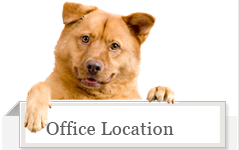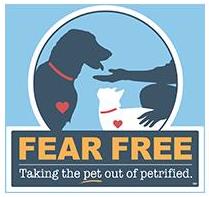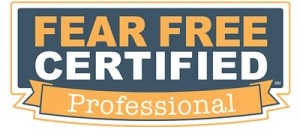
May 2020 News from Belle Mead Animal Hospital
Puppy Socialization during a Social-Distancing Pandemic
Since the outbreak of COVID-19, the world has had to embrace the concept of social distancing. According to CDC regulations, all humans should remain at a safe distance of 6 feet from each other. This adds an entirely new challenge to the world of puppy socialization and training, as puppies during this period may be practicing social distancing with their owners.
Puppies should still be introduced to their “new” world in the safest ways possible (for puppy and owner). The puppy socialization period has not changed even though our world has. From 6-16 weeks, we still need to be introducing puppies to the human world while keeping ourselves safe from disease outbreak.

Socialization is critical to a puppy’s health and welfare. Socialization helps puppies learn to be at ease in their expected living environment through exposure to different humans, environments, surfaces, sights and sounds, and to novel objects. Even though this is a very stressful time emotionally, mentally, and physically for all of us, on the positive side, staying at home has given many the opportunity to adopt or foster puppies. There are ways to introduce puppies to new sights and sounds and still maintain social distancing.
The tools we use during socialization are Desensitization and Classical Counter Conditioning. This is about creating safe and healthy exposures for puppies meeting humans, forming relationships with other species and other puppies. It’s also about getting the puppy familiar to objects and sounds.
During this time, we are also teaching useful cued behaviors for socialization, such as name orientation and targeting.
Meeting Socialization Goals:
Puppy socialization goals include helping the puppy grow into a comfortable dog, welcomed and confident in our human society and with our social norms. A well socialized dog has learned appropriate social skills with other puppies and species. A well socialized dog can think rationally in a situation and has a strong foundation for lifelong learning.
Positives to Socialization in a Global Pandemic
Remember, there are two sides to every story, and so it is with puppy socialization during a pandemic. On the positive side, it gives the owner a chance to put their creative hats on and think outside the box when it comes to creating social boundaries, teaching impulse control, and puppy independence. Even with limited interaction with unfamiliar people, you can continue to socialize.
First Learn the Puppy’s Language
You can learn a lot by watching your puppy’s body language which includes watching their tail, posture, hair, ears, eyes, mouth. Common signs of fear, stress and anxiety include weight shifting, lip licking, ears back, paw lift, tail tuck, freeze, yawn, and crouched posture.
Getting Started
We start with positive reinforcement with conditioned reinforcers (clicker training, or tongue clicking under a face mask) which allows reinforcement to good behavior the moment the behavior occurs. The click is matched up with a treat.
We also use desensitization, which means presenting a stimulus at a lesser intensity (social distancing under this pandemic). We use classical counter conditioning with a goal to change the way the animal feels about a certain stimulus.
Say for instance you are walking down the street and the puppy sees a person with a big hat and big coat. The goal is to be clicking the moment they see the stimulus and offer a treat, so they associate a positive response to seeing a new type of stimulus.
Inside the home under pandemic conditions with little contact with many people, we can use tools such as costumes and introducing different smells with lotions, perfumes, and soaps. For example, you can leave the house, go out into the garage, spray yourself with perfume, and walk back in with a crutch. You will immediately look and smell different to the puppy.
Another idea for inside the home is creating a “novel” room – introduce different scents, sounds, and new objects daily. Keep doors closed otherwise and teach the puppy each time you let him in that change is normal.
When outdoors, we must maintain a safe distance of 6 feet with unfamiliar people under pandemic conditions. Consider this an opportunity to practice “not” greeting other people. Outside the home, seeing people does not always mean we are going to interact. When the puppy sees the person walking by, click and give them a treat. If they are standing calmly, not jumping or barking, then you are also reinforcing good behavior.
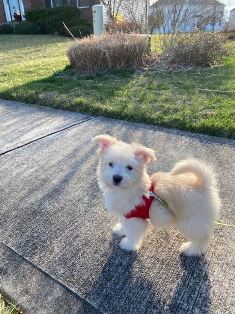
Remember, when you are outside of the home, look for weight shifting or other signs of fear when approaching objects – begin reinforcement before fearful behaviors start. Field trip ideas include parks, trails, and standing outside grocery stores (follow human safety recommendations in your location). A grocery store parking lot offers activity by many different folks and lots of different sights and sounds.
Independence and Alone Time Routines
You also need to practice leaving the home and leaving your dog for periods of time (this is setting a routine to prepare for the time when the pandemic has passed). Set an expectation for puppies to understand that being with you is not always how the world works. Get animals used to the fact that humans don’t stay at home all day, they do leave from time to time. You can put the puppy in a playpen both while people are present but also practicing leaving the puppy alone. The puppy needs to learn that alone time is fun, too. You can introduce toys and food enrichment such as Kong treats before leaving the puppy alone.
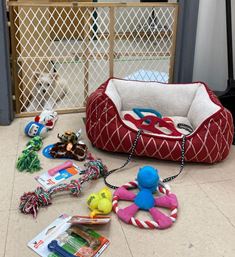
Cues for Successful Socialization
Teach the puppy their name. This name orientation is useful as an interrupter; you must capture the behavior and mark it immediately with a click and treat during the puppy’s head turn the moment they hear their name.
A nose target exercise is another useful tool for recall, interrupter, and greeting ritual and shapes behavior; reinforce nose touch to hand with treats.
Shaping is step-by-step approximation that leads to a goaled behavior – teaching the puppy to understand “when I do this, then this awesome thing happens.”
Continue Learning and Practicing
Belle Mead Animal Hospital has created a Dog and Puppy Training Playlist that includes what you need to do when you bring your puppy home, especially between the age of 9-19 weeks – Visit the Dog and Puppy Training Playlist Here and make sure to Subscribe to our YouTube Channel for updates!
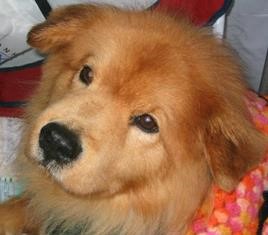
Use the BMAH Website as an Educational Resource!
Did you know you can now Search our website for particular topics of information and advice? Visit our Learning Center > Search this Site and enter a word or words of the subject you want to learn more about. We are constantly adding new material to our website and improving functionality to help serve you better.

Belle Mead Animal Hospital, Your Other Family Doctors
Handling Every Pet with Love Every Day!
As Certified Fear Free Professionals, our Mission is to prevent and alleviate fear, anxiety and stress in pets by inspiring and educating the people who care for them. Visit Fear Free Happy Homes here and join at no cost!
LIKE us on Facebook and Follow us on Twitter @BMAH121 and Pinterest for news and pet wellness tips. We’re also on YouTube! Subscribe for updates! Tag and Follow us on Instagram!




